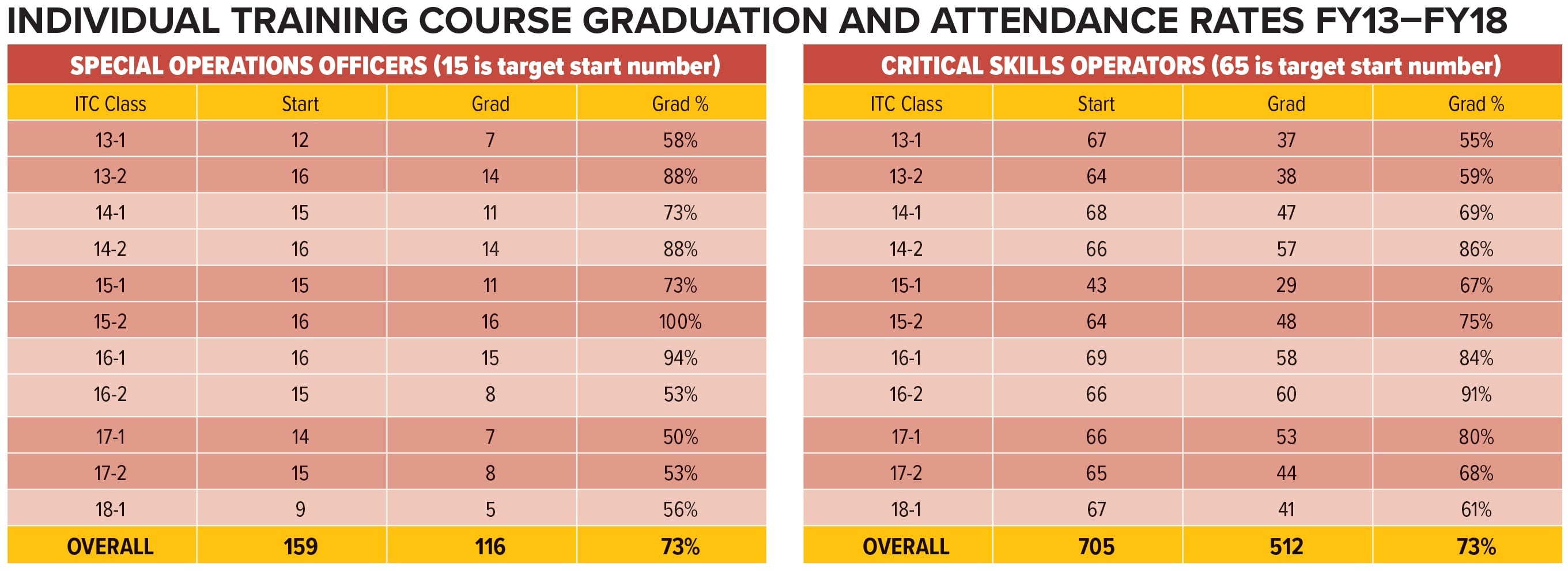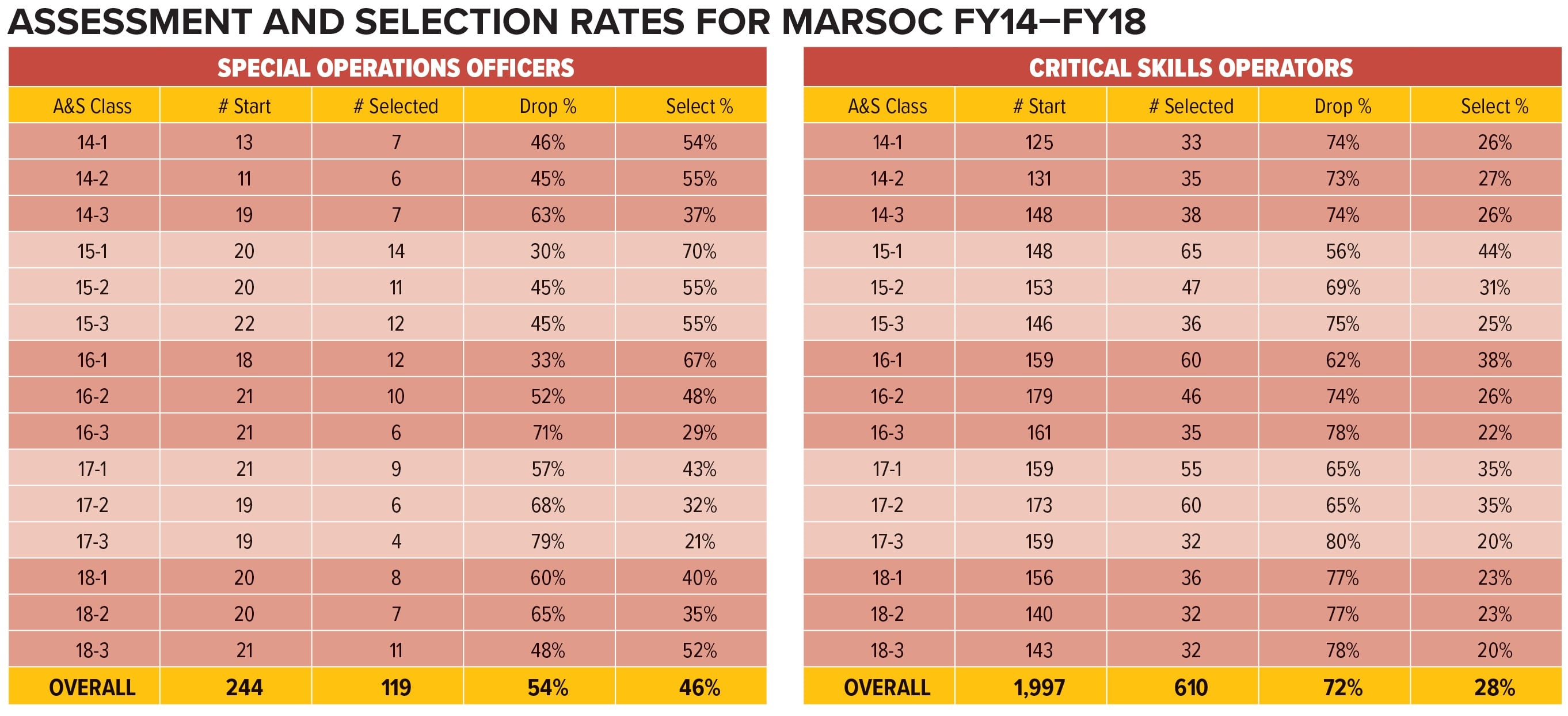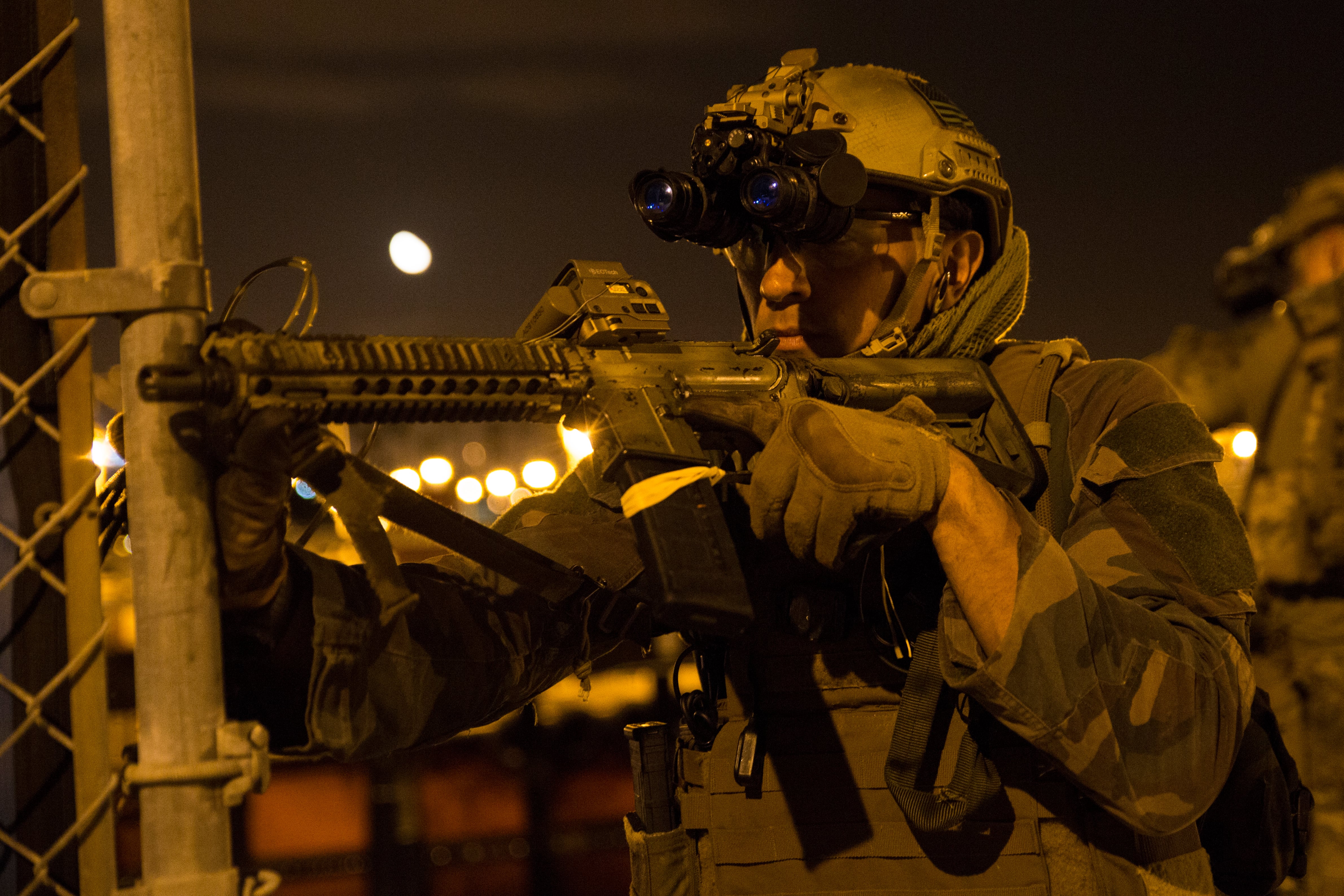In 2005 then-Secretary of Defense Donald Rumsfeld directed the Marine Corps to contribute to the United States’ special operations community.
Stacked heavy with Marines who hail from the 0321 Marine recon field, MARSOC’s identity and mission profile in its early days was heavily intertwined with the heritage and culture of the Corps’ amphibious reconnaissance community and its pipeline of training and schools.
It nearly resulted in the extinction of Marine force reconnaissance units, but now, 13 years later, the Corps’ elite special operators have forged an independent identity and bear the namesake of the iconic Marine rubber boat teams of World War II, known as the Raiders.
According to data obtained by Marine Corps Times via a Freedom of Information Act request, Critical Skill Operators, or CSOs, who earn the 0372 occupation are now far less saturated with former recon Marines.
Today’s Marine commandos now hail from a variety of occupations from intelligence, communications and engineers, but primarily they are coming from conventional infantry fields.
MARSOC has since created its own training pipeline, a grueling two-phase assessment and selection process, and a nearly nine-month school house known as the Individual Training Course, which transforms Marines into elite special operators.
The Raiders’ process of selecting and training its commando force is turning into success on the battlefield, and appears to be fielding Raiders at a steady rate — CSOs and special operations officers, or SOOs, are manned at 79 percent and 83 percent respectively, according to data obtained by Marine Corps Times. The data is current as of February.
Over the past several years, the Raiders’ enlisted and officer ranks have managed an average graduation rate at the lengthy and physically demanding ITC course of nearly 73 percent — pumping out 512 CSOs and 116 SOOs.
One ITC class even managed to graduate 100 percent of its officer candidates at ITC, and another course graduated 91 percent of its enlisted crew.
“The initial training pipeline for special operations is necessarily some of the most rigorous training available anywhere,” Maj. Nicholas Mannweiler, a spokesman for the Raiders, told Marine Corps Times. “It is significantly demanding physically, mentally and spiritually.”

But for a Marine to even get the chance to attend the commando ITC course requires making it through the Raiders’ arduous two-phase selection process, which has attrition rates that have hit as high as 80 percent over the past several years.
The selection data obtained by Marine Corps Times highlights that Marine officers have been more successful at selection over enlisted counterparts. Officers averaged a 46 percent selection rate over the past five years compared to a 28 percent rate for enlisted candidates.
That disparity is partially due to the lower numbers of officers participating in selection over their enlisted colleagues.
Officers generally number around 20 individuals at selection while enlisted participation is generally more than 100 Marines per assessment.
But, overall MARSOC is hitting its goals for the number of Marines it wants attending the nine-month ITC schoolhouse, where those Marines have a high chance of succeeding at the course. Meaning, MARSOC’s selection process is picking the right Marines.
“MARSOC benefits from the exceptional pool of qualified Marines each year who are eligible to come to Assessment and Selection," Mannweiler said. “Our process is purpose-built to identify the candidates best-qualified to complete ITC and earn their Marine Special Operator Insignia."

Mannweiler added that second term re-enlistments average about 82 percent among those eligible.
“We see stability across both the officers and our enlisted Raiders,” he said.
It appears to be a positive metric for the Corps, while its other elite fields like recon and snipers have struggled to maintain steady attendance and graduation rates.
According to data obtained by Marine Corps Times, the recon filed is manned at 76 percent. The data also is current as of February.
The recon field has had up and down swings in its attendance. In 2013, 526 candidates attempted the Basic Reconnaissance Course, but in 2016 that number dropped to only 280.
Some of MARSOC’s successes and lessons learned from how it trains, selects and recruits is being shared internally with the Marine Corps and across the SOCOM community.
RELATED

Mannweiler explained that as the youngest SOCOM component, the Raiders have benefited from lessons learned across the special operations community.
“Collaboration continues today through shared training, education and joint SOF [special operations force] operations. Raiders routinely attend [United States Army Special Operations Command] USASOC-hosted schools and our forces train together in training exercises across the spectrum of special operations,” he said.
And MARSOC also continues to collaborate and partner with the Corps.
“Training collaboration takes many forms including shared attendance opportunities at MARSOC courses and schools, Raiders attending Marine Corps schools such as combatant diver and others and working together in forward-deployed locations,” Mannweiler explained.
After 13 years, the Raiders have built an indispensable reputation on battlefields from Syria to Afghanistan, where the commando force has racked up more than 300 valor awards over 300 operational deployments.
That operation tempo has come at a considerable cost of 43 deaths.
As MARSOC has pulled itself out of the recon orbit to create a unique special operations unit, it continues to progress and overhaul its forces to prepare for the future high-tech battlefield fight.
Shawn Snow is the senior reporter for Marine Corps Times and a Marine Corps veteran.





